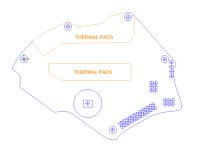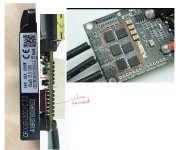I am being reading opinions from different users, here and on 2 telegram channels (that's for everyone!!). Everyone almost do not recommend to use 13S, but 12S.
On my test to run the motor with the throttle, as you can see, I setup a motor current from 0 up to 5A and a 0 amps brake current. That is because I am running from a lab power supply and If VESC would use a brake / regen current, the voltage of my lab power supply would increase and would risk to damage it (that already did happen to me in the past). But also the VESC could burn, because this (and cheap) lab power supply are not batteries and they do not limit voltage and returning current!! An high voltage because of the motor, could both damage the lab power supply and the VESC.
My lab power supply outputs max of 32V and the VESC is max 60V.

You can check here in the video, that the lab power supply never goes over 30V:
[youtube]QEnLWcn1LbE[/youtube]
So I would risk to try use this 60V VESCs on our project. I think there are mainly 2 reasons that we are safe:
- VESC brake current needs to be set to 0: this works for our EBike application, as this motors do not need to brake and so they will not produce any regen!! (otherwise that would be a BIG marketing point, a mid drive motor that also charges the battery on down hills).
- Freewheel: I think this mid drive motors freewheels, as seen on the video, it does not rotate backwards, so I think they will not provide any big currents that can increase the battery voltage
-----
For my development, I only have that controller from the video and I hope to receive next week the Flipsky 75100. But if some of you would like to contribute for me to buy that smaller controller (my Paypal is in my signature), I will do it and start using it.
@rezystor1990, you did a great work showing that is possible to put this small VESC controller inside the original motor. Can you help further in like design and 3D print the part to hold the encoder board + the VESC?
NOTE: we are using the Telegram for a faster communication for development, everyone is free to join: https://t.me/bafang_m500_m600_development









